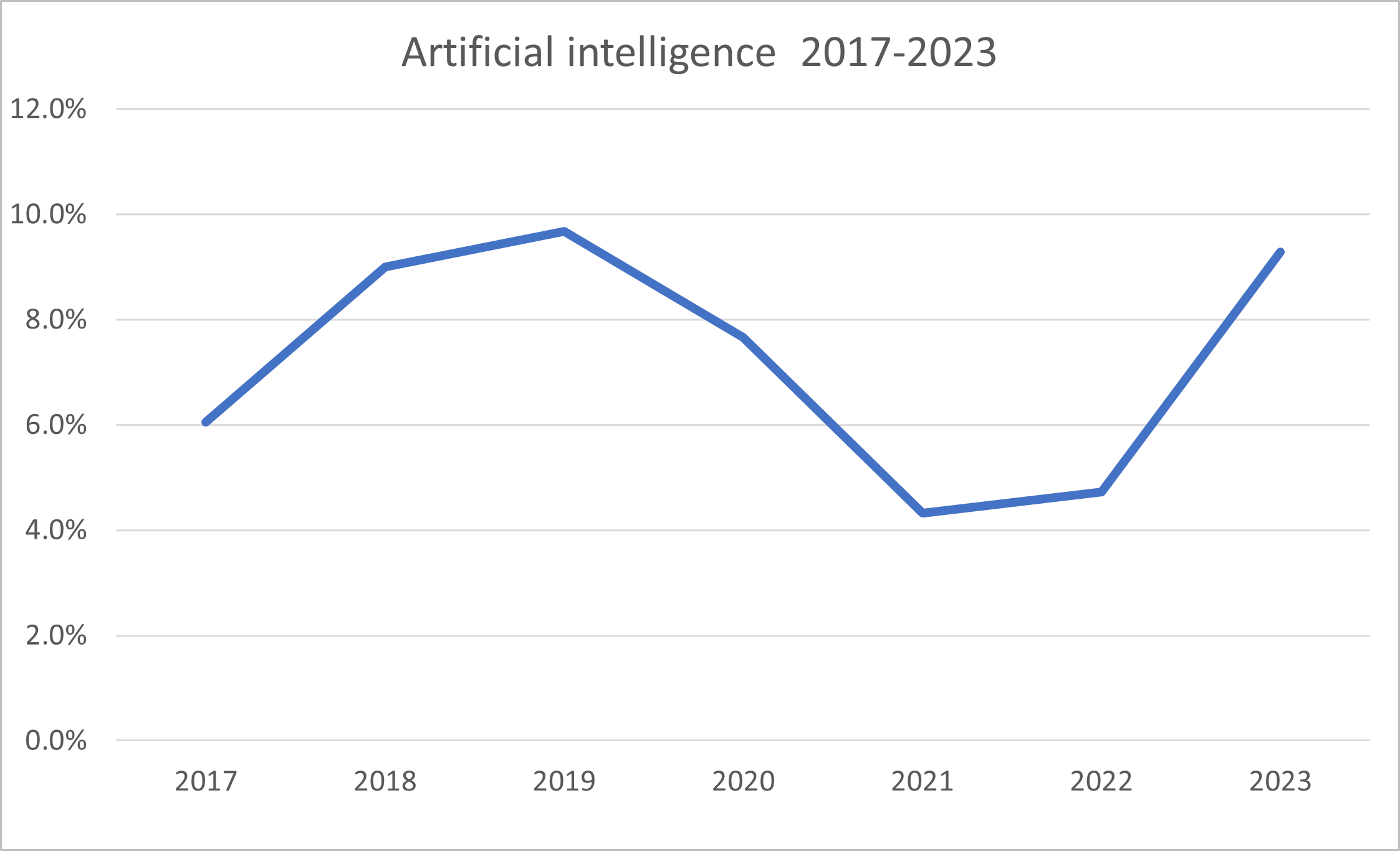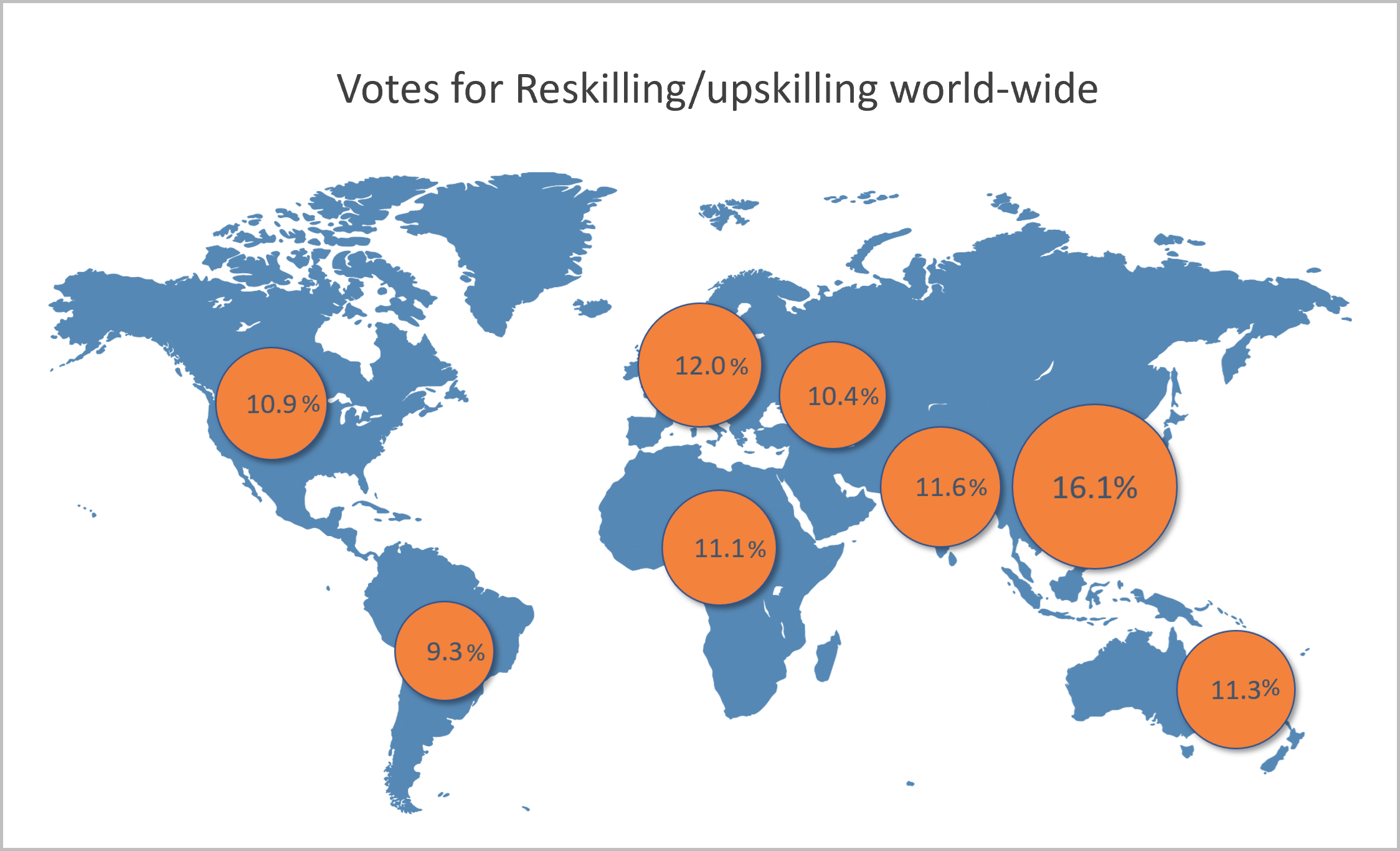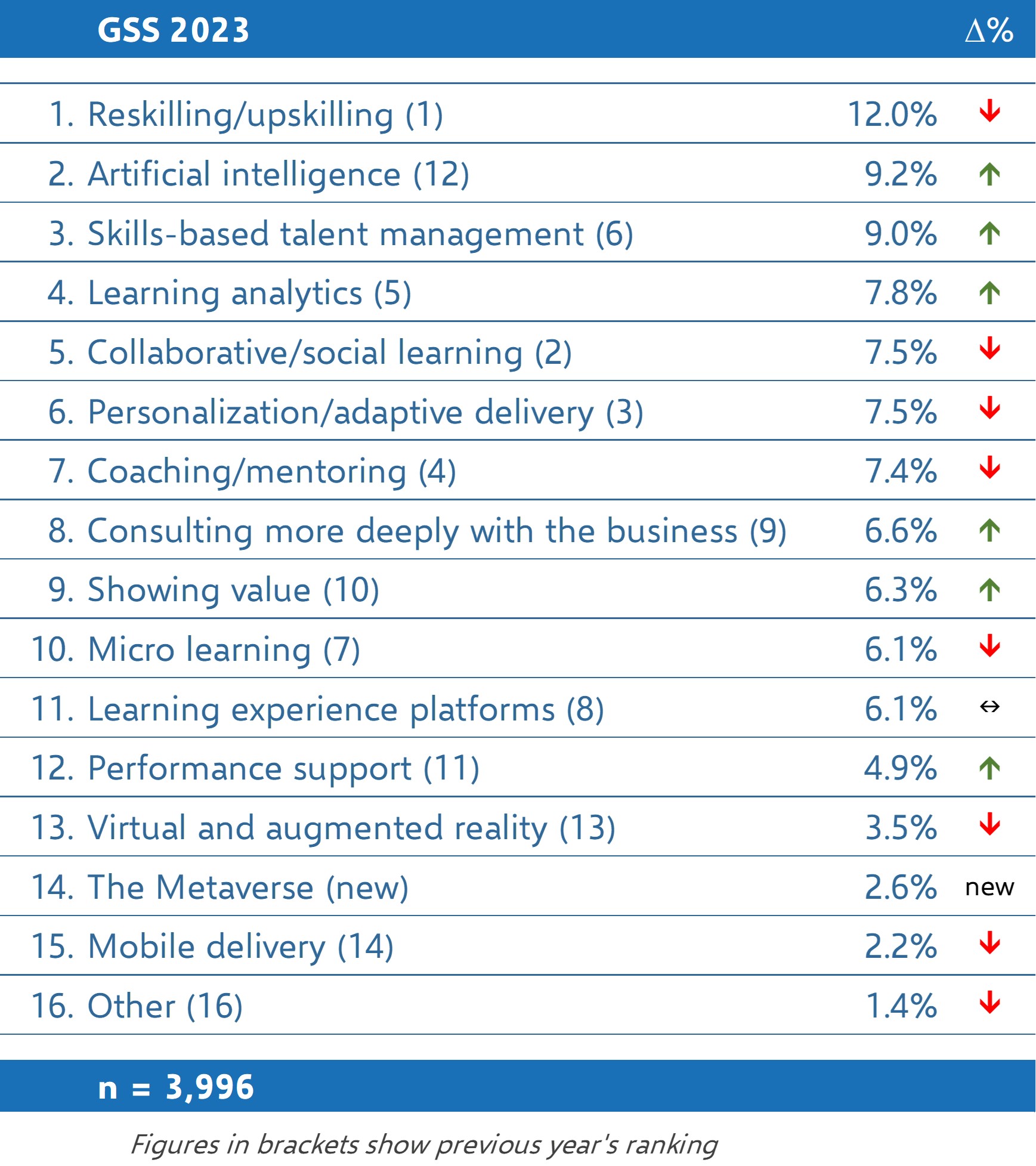L&D Global Sentiment Survey 2023: The return to data

2023 marks the 10th year of the L&D Global Sentiment Survey. It also appears to mark a transitional year for learning and development, world-wide. This is the year that L&D returns to a focus on data, AI and systems after a temporary departure. The return is emphatic.
The previous two years of the survey were dominated by the pandemic and by the isolating effects of lock-down. In 2020 and 2021, respondents voted for social interaction, in the form of coaching and mentoring, and collaborative and social learning.
In contrast, this year’s survey was dominated by two things – an underlying sense that lock-down is behind us, and by the launch of the AI-driven chat bot ChatGPT on 30 November 2022, 8 days before the survey opened. That massively affected the results, but it is not the only thing of note in the results, as we’ll see.
In this blog I cover the results of the survey. The full report will be out before the end of February. To receive your free copy, scroll down and register for my newsletter.
About the survey
The survey was answered by 3,996 people from 100 countries, with three questions:
- Obligatory (pick list): ‘What will be hot in workplace L&D in 2023?’ (pick 3 from 16 options)
- Optional (free text): ‘What is your biggest L&D challenge in 2023?’
- Optional (multiple choice): ‘Which of these best describes where you do most of your work?’ (choice of 6 answers)
For more on how the survey was conducted, and caveats about interpretation of the data, scroll down to How the survey was run and Caveats.
Here I explore five things that stood out in exploring the results:
- Data is back
- The decline of Reskilling/upskilling continues
- Geography matters
- Business impact stays steady
- Challenges shift a little
1. Data is back
Over the years, options tend to decline in popularity, as they cease being ‘hot’ to respondents (the question each year being ‘What will be hot in workplace L&D in the coming year?’). This can happen either because something transitions from exciting new idea to business-as-usual activity (as with Mobile delivery) or because an initially attractive idea is revealed over time to be complicated to implement (Curation).
We call the former ‘Mainstreamers’ (video also fits this category) and the latter ‘Wallflowers’ – they are invited to the dance, but don’t participate:

After its introduction onto the list in 2017, Artificial intelligence followed the familiar pattern of an initial burst of interest, followed by a decline. But this year something changed:

This year, Artificial intelligence shot back up the table, rising an unprecedented 4.5% to #2. To put this in perspective, the greatest jump of any option previously was 2.9% in 2018 (also AI, when it was on its initial rise). When options are in decline they almost never bounce back. The largest reversal previous to this was just 1.1%.
In other words this leap back up the table is extraordinary. It was undoubtedly driven by interest in ChatGPT and its offer of free access to powerful AI.
However, take a closer look at the chart above, showing the voting pattern for AI over the years. The reversal started in 2022, when it bucked the trend and rose slightly from its position in 2021. L&D’s recent interest in AI predates ChatGPT.

AI wasn’t the only option that rose this year. as the table excerpt above shows. At #3 we have Skills-based talent management, which was new last year, and which rose 1.8% this year, and at #4 is Learning analytics. Learning analytics was also trending down until this year, when it reversed its previous decline with a rise of 0.4%. There is more here than simply a fascination with AI.
These results suggest a shift in mindset towards the idea that data can be powerfully applied for the benefit of L&D. In contrast, look at Collaborative/social learning – one of the few success stories of the pandemic – down 2.1% from #2 to #5.
2. The decline of Reskilling/upskilling continues
When introduced onto the table in 2021, Reskilling/upskilling came in at #1 with 13%, dominating the table and each region world-wide, where there was uniform support for this new option. This year, however, the decline continues from last year, with a drop of 0.5%. Without strong support for the option from South-East Asia, that drop would have been a full 1%:

Looking across our eight regions, it is clear that while Reskilling/upskilling is still seen as important, it no longer dominates as it once did.
3. Geography matters
As the graphic above shows, opinions can vary widely across the globe for a single option. They also vary between regions, and perhaps nowhere is the contrast in opinions starker than between South America and North and Central America (from Canada to Panama).

These tables reflect consistent differences between the continents. South America consistently ranks Collaborative/social learning at #1, while North America always votes it down, putting it at #8 this year. In contrast, look at how the North ranks Artificial Intelligence, putting it at #1, against #9 in the South.
4. Business impact stays steady
As we’ve seen, votes for most options trend downwards over time. But not, however, for two of them: Showing value and Consulting more deeply with the business. These epitomise the need for L&D to focus on business value – I would hope that L&D practitioners consult with the business before doing anything else, and then keep in regular contact with it to show the value they are creating.

As the chart shows, these two options have bucked the downward trend to stay pretty much in the middle of the table and over the past 5 years have shown a slight upward trend. Is the world waking up to a need to focus on L&D impact? Maybe.
5. Challenges shift a little
40% of respondents answered the question ‘What is your biggest L&D challenge in 2023?’ That’s 1,615 people commenting mostly in English, but also in Mandarin, Spanish, French and Ukrainian. The total of 17,734 words is a little longer than The Little Prince by Antoine de Saint-Exupery, and I have not have time to read them all yet. (Yes, I do read them all. I count it a privilege to learn what’s happening at the sharp end of L&D each year.)
The analysis I have done so far shows a shift from last year. There are more comments on impact, value and budget, fewer on content and – perhaps unsurprisingly – far fewer on hybrid working and adapting to a post-Covid world. What has not changed is the constant refrain of the need to engage stakeholders, which comes through loud and clear as a continued trend from last year.
Expect a future blog looking into these comments in more detail.
Conclusion: Back to the future
In some ways, it is as if the pandemic never happened. The rise in interest in collaborative learning seen in 2021 and 2022 has evaporated, replaced by a fascination with the use of data in L&D.
We’re back to where we thought we’d be in 2019, when Artificial intelligence ranked #2, or in 2020, when Learning analytics was #1. In the intervening years, the power of AI and the ability to handle data, have grown hugely more sophisticated. ChatGPT is only the latest, public expression of decades of work that have been taking place in the background. Has L&D’s understanding of AI and data kept pace during all this? Or are we destined to play catch up with the powerful technologies that bewitch and bedazzle us?
The launch of ChatGPT began an AI arms race between tech giants (as well as agile start-ups). Given the stakes, it is unlikely that the story will finish in 2023. We can expect to see the growth of AI and the power of the use of data continue apace this year and beyond. The challenge for L&D is whether it can master it.
How the survey was run
Polling ran from 8 December 2022 to 11 February 2023. Respondents were contacted via social media and email and voted for three of 15 suggested options, plus a free text ‘Other’ option. There were also two optional questions: ‘What is your biggest L&D challenge in 2023?’ (free text) and ‘Which of these best describes where you do most of your work?’ (choice of 6 answers). 3,996 voters participated from 100 countries. New countries with substantial participation this year included Malaysia (329 respondents), Ukraine (212), Turkey (147) and the Philippines (87).
The report
The full report on the survey results will be published later in February. Other report based on the data will follow. To claim your free copy of all these report, please register here:
Caveats
Respondents to this report are self-selecting and unscreened. We cannot guaranteed they are involved in L&D, although the targeted nature of promotion and the question itself makes this very likely. They almost certainly do not represent a cross-section of L&D practitioners: those that do choose to respond are likely to be Innovators and Early adopters and users of technology.
The voting population cannot be guaranteed to be the same each year, making year-to-year comparisons across the data problematic, although voting does follow regular patterns year-on-year within and across countries and regions.
The options on the list are not defined, neither is the term ‘hot’. This would be pointless, as we couldn’t not force people to first read and then apply the given definitions. It does mean, however, that it is quite possible that respondents have different things in mind when voting.
The main survey is in English, but two surveys were offered in translation: for French (only in French, n = 119) and Chinese (in both Mandarin and English, n = 59). This may produce issues around respondents’ interpretation of the translations.
Thank you!
Many thanks to everyone who voted, and to the sponsors and media partners of the 2023 L&D Global Sentiment Survey:




